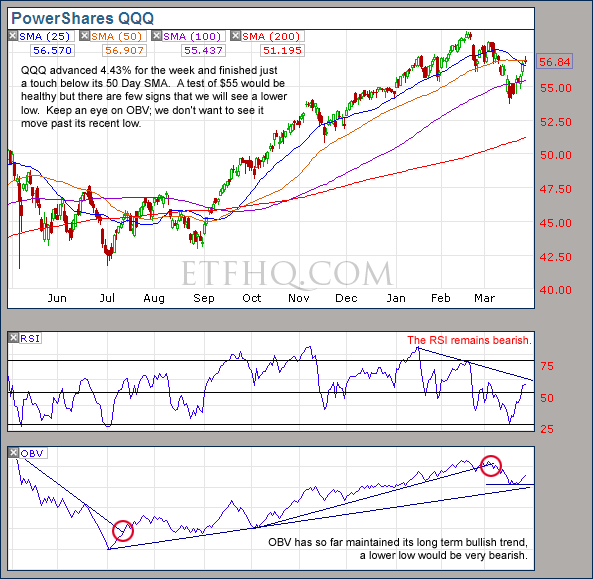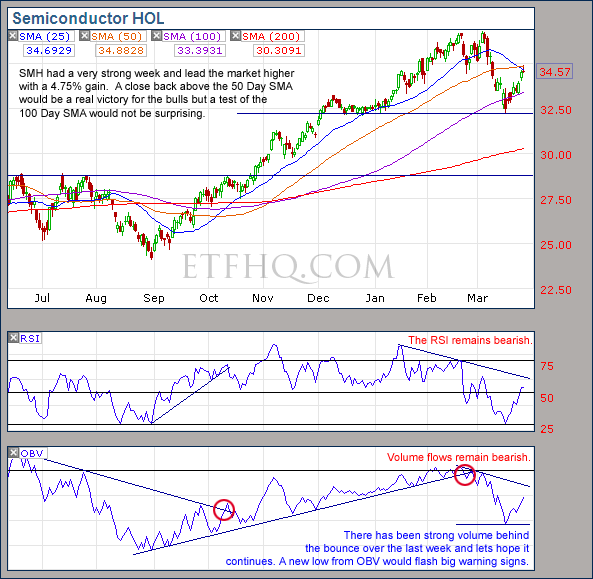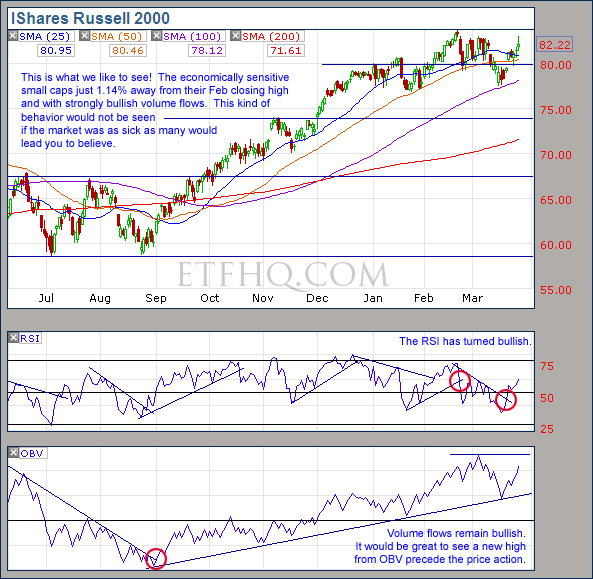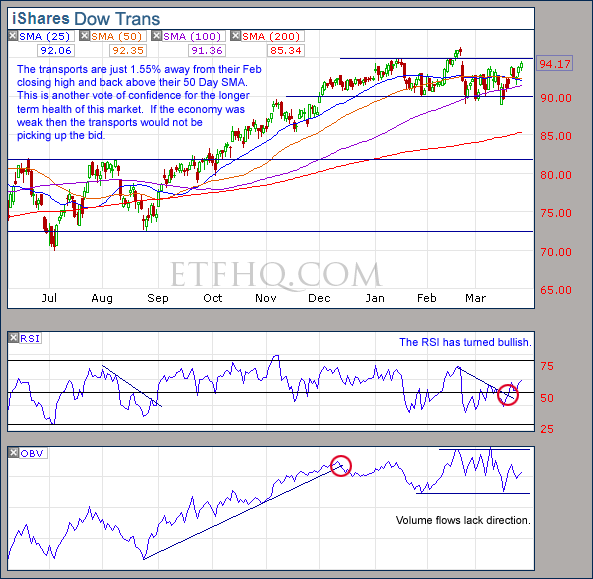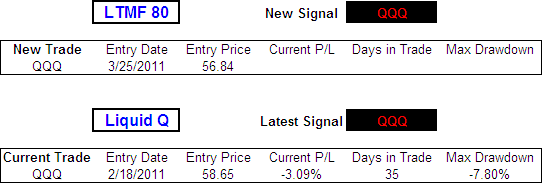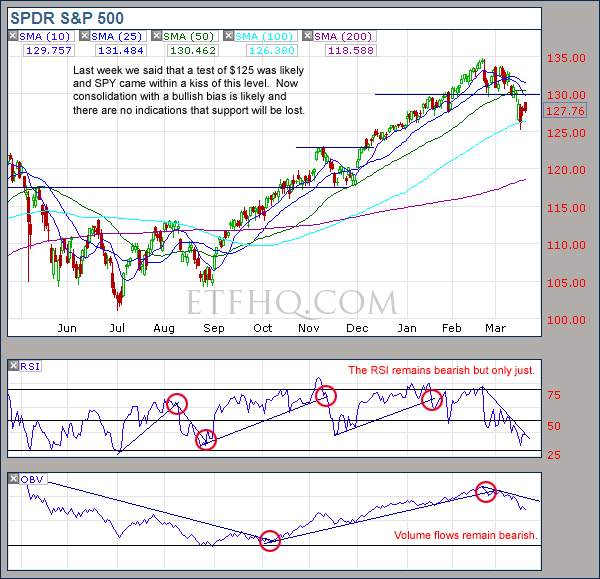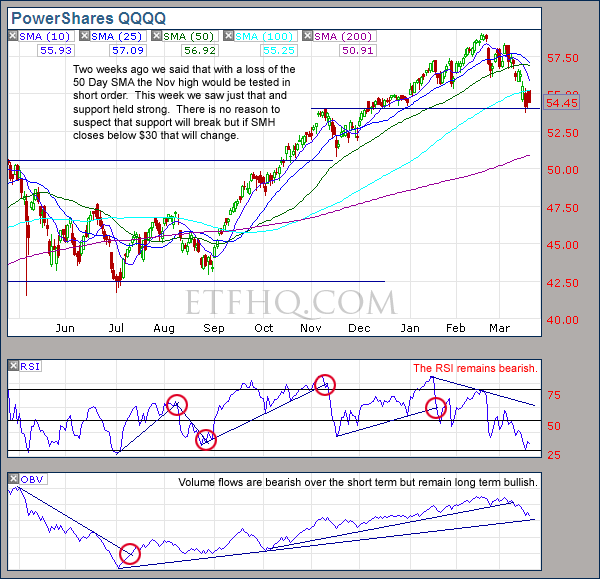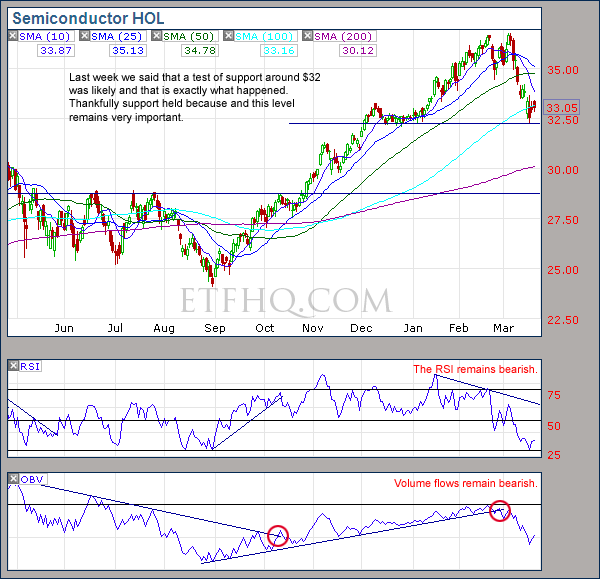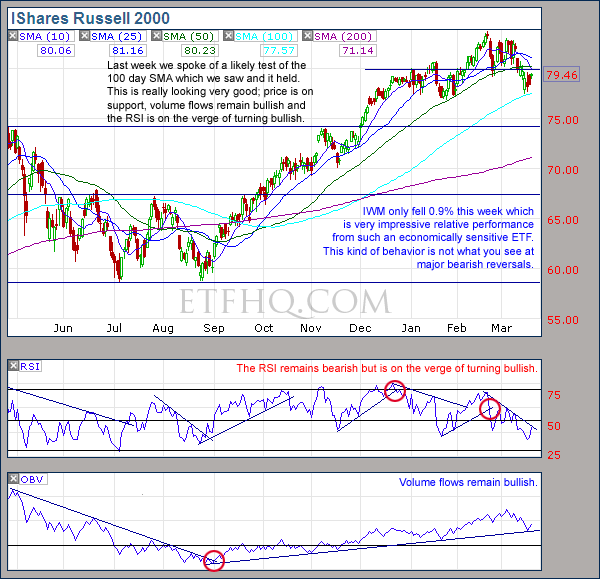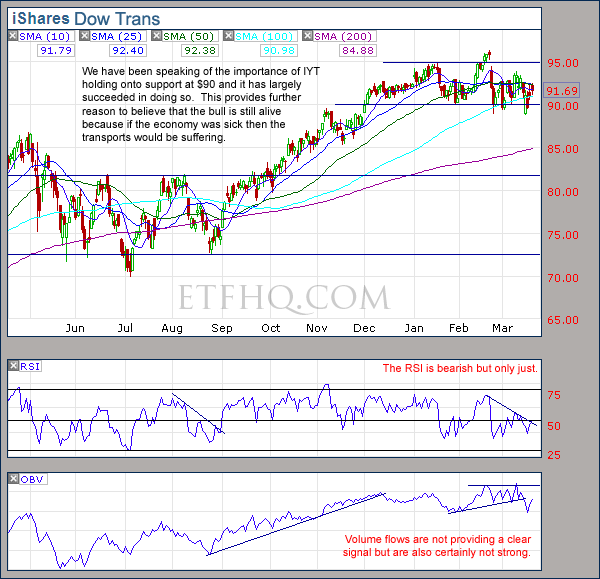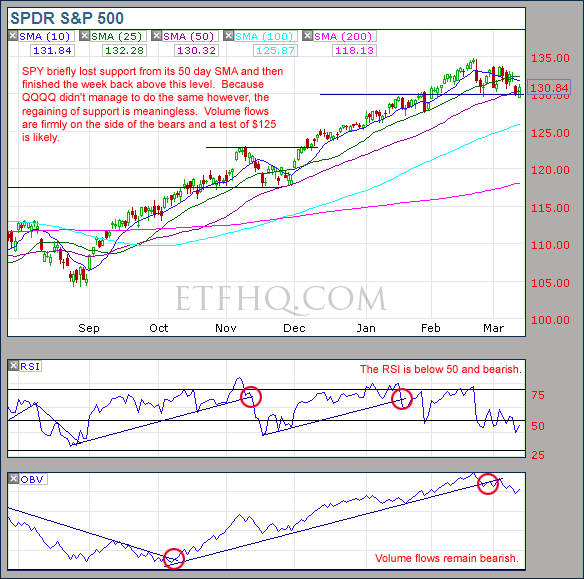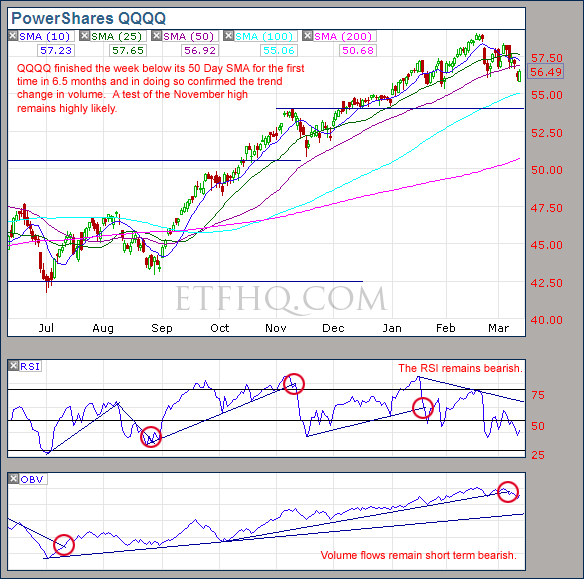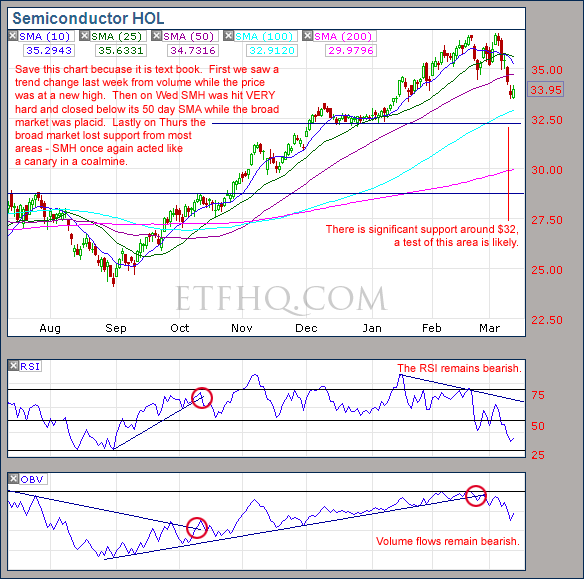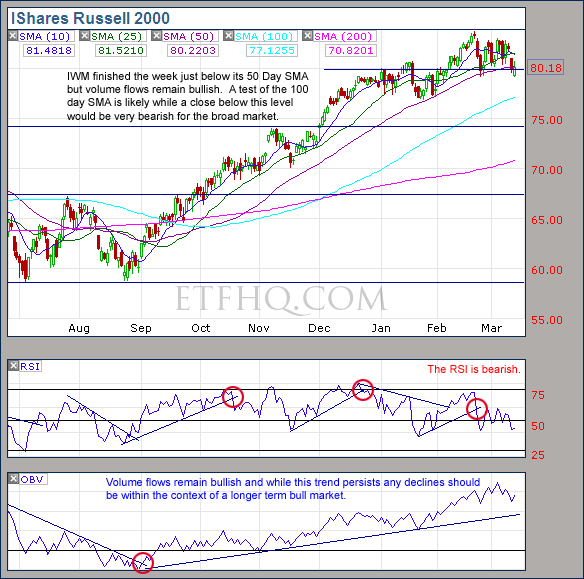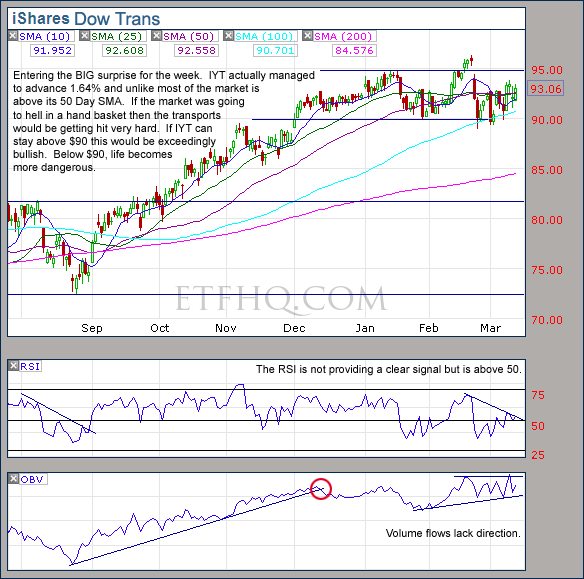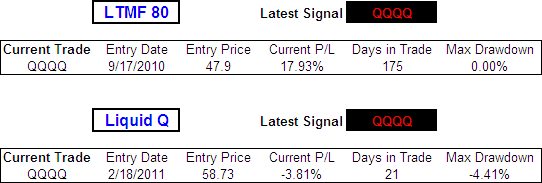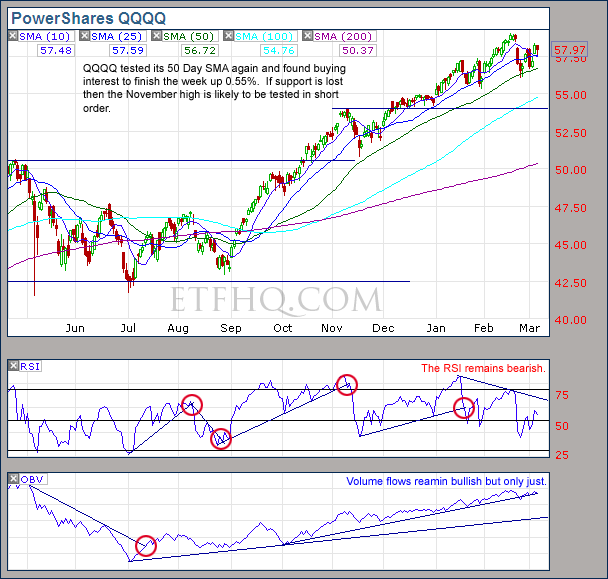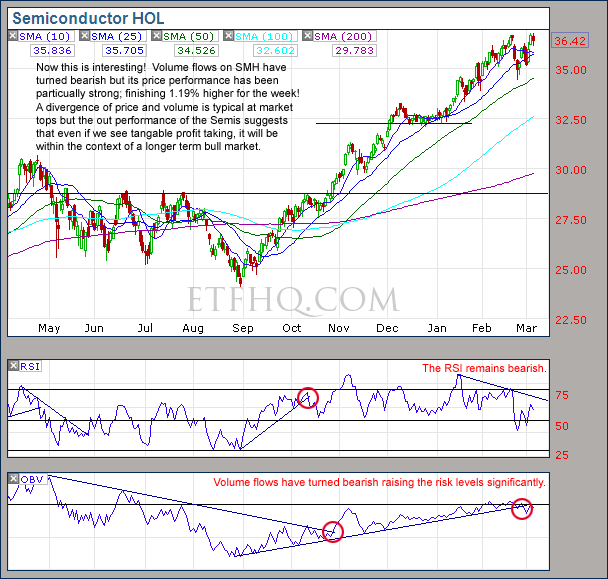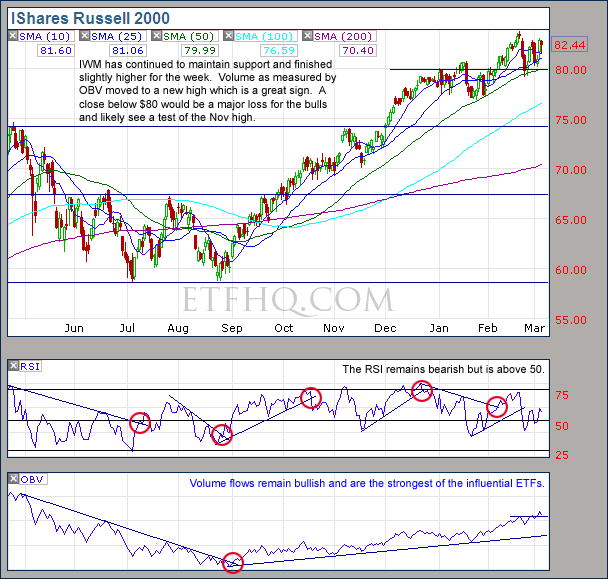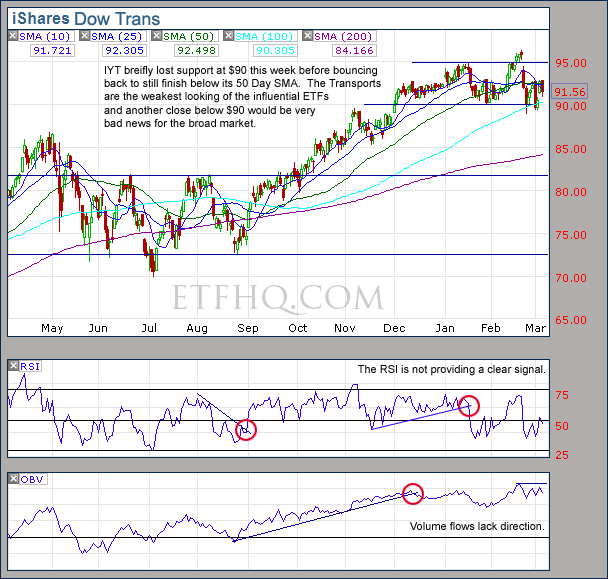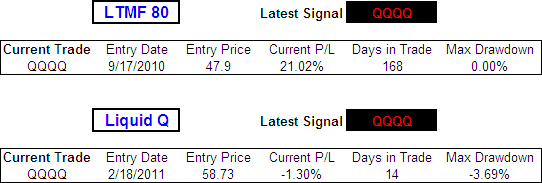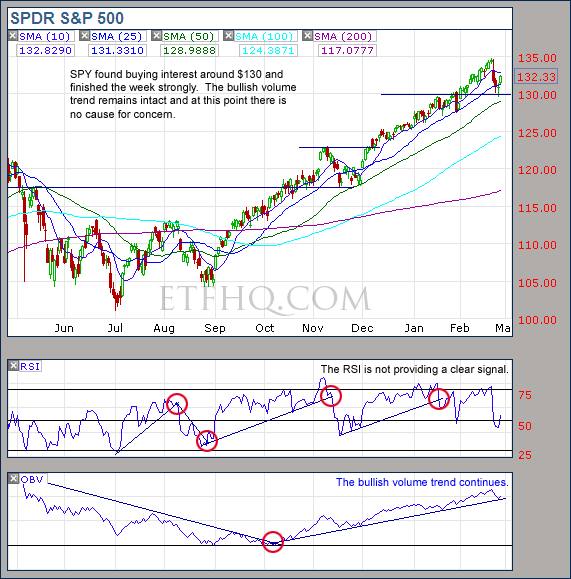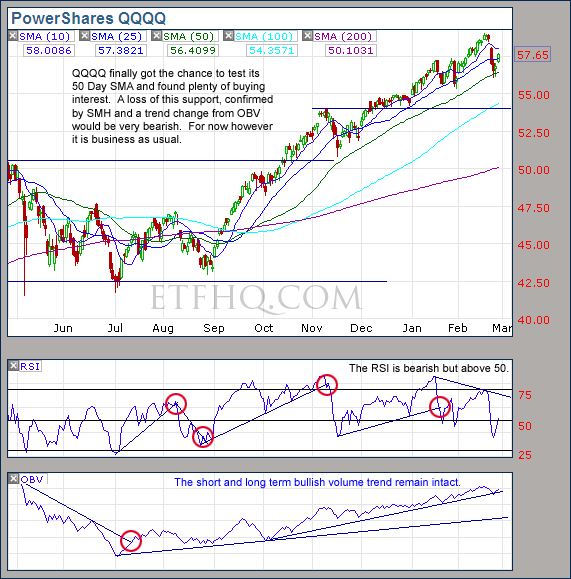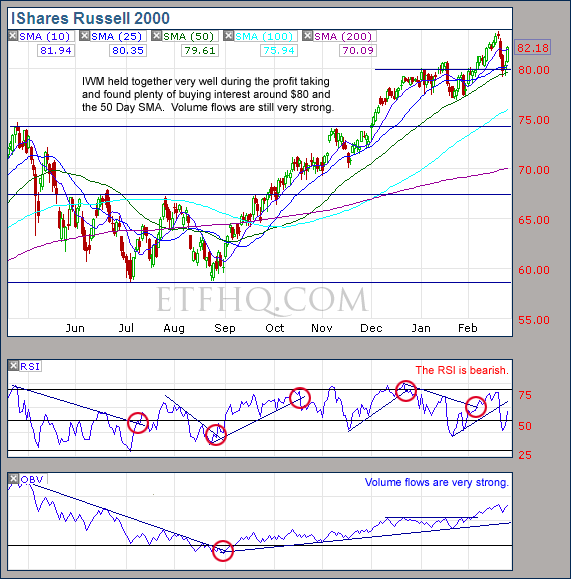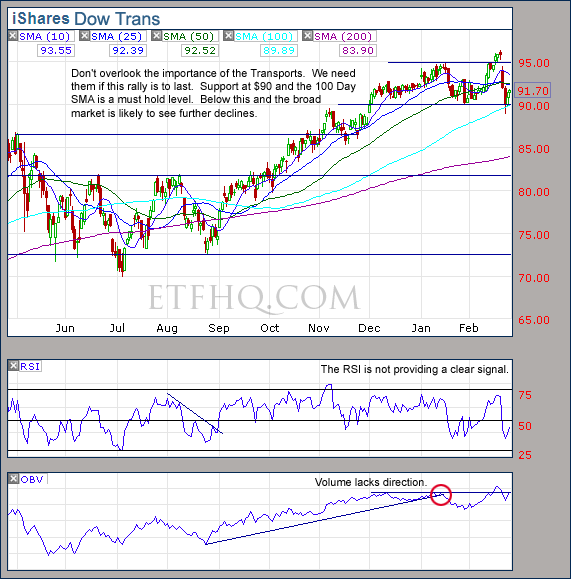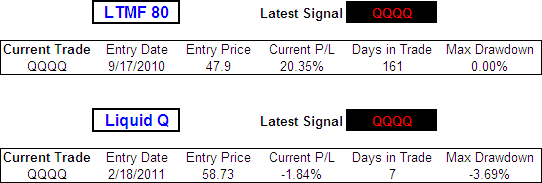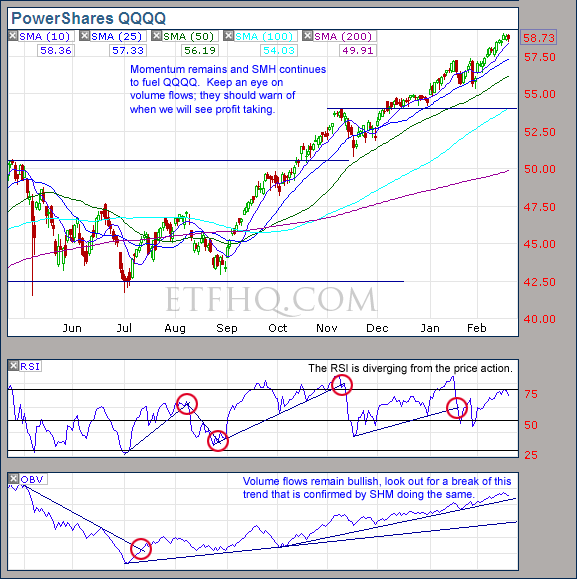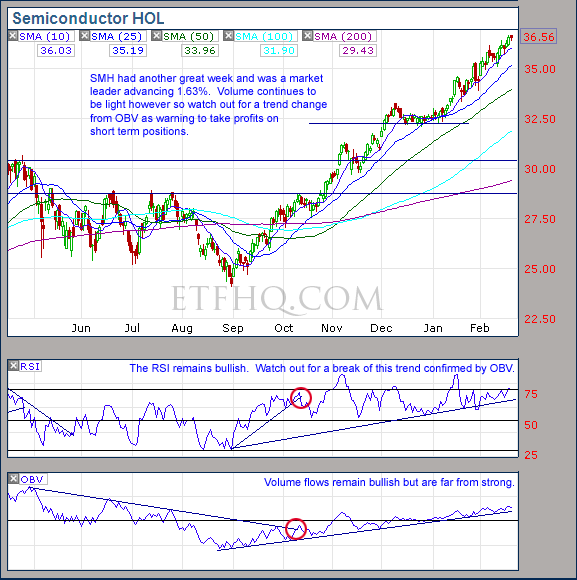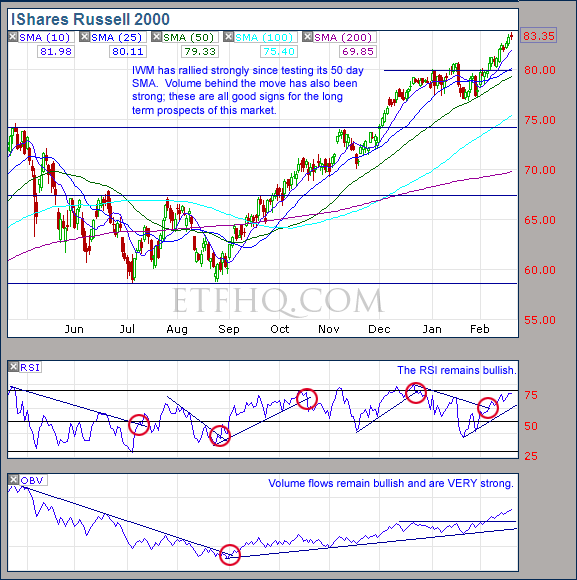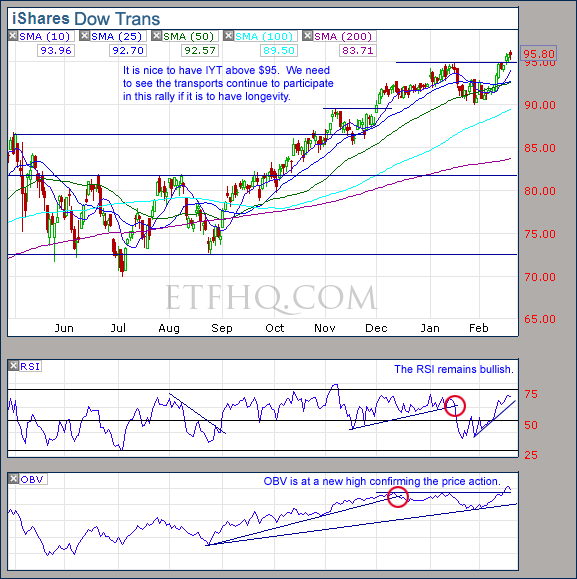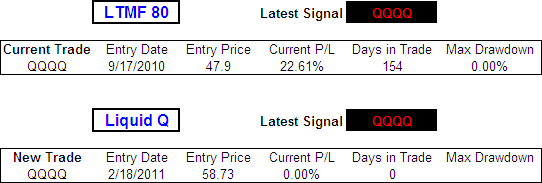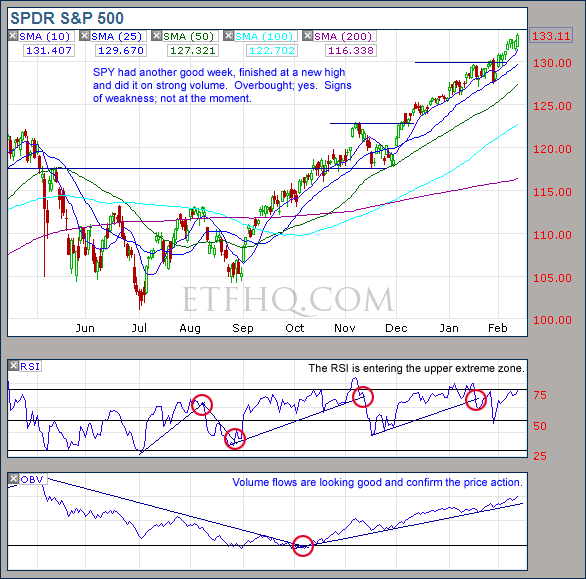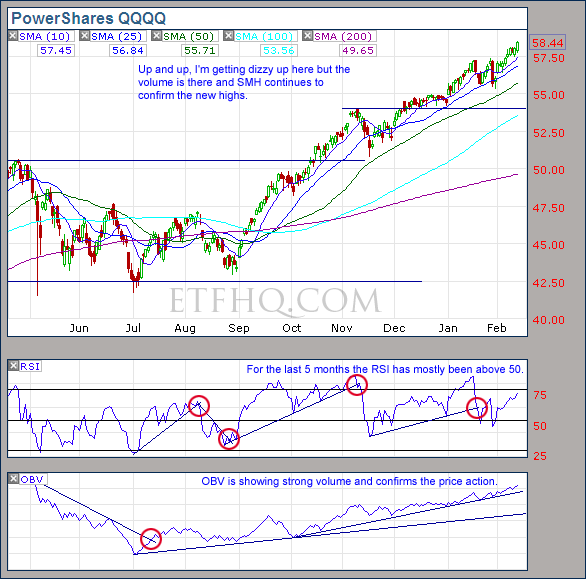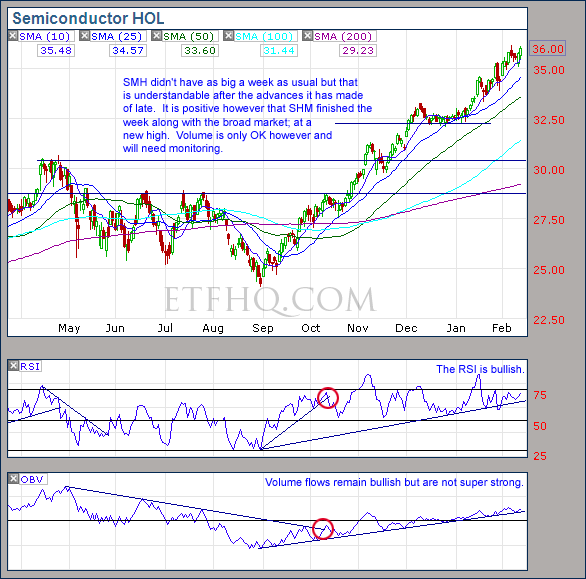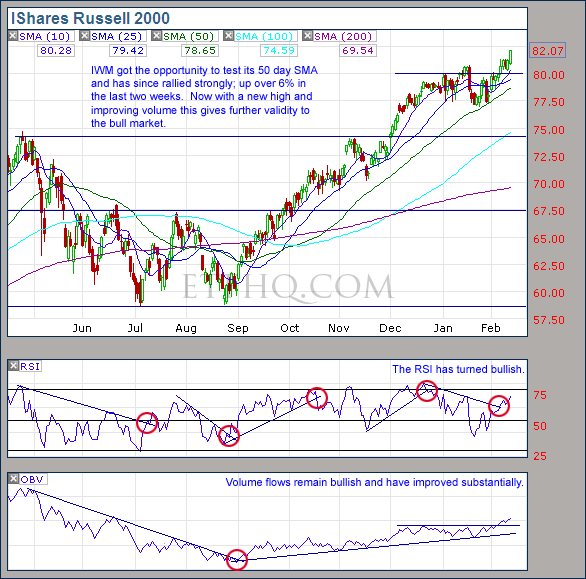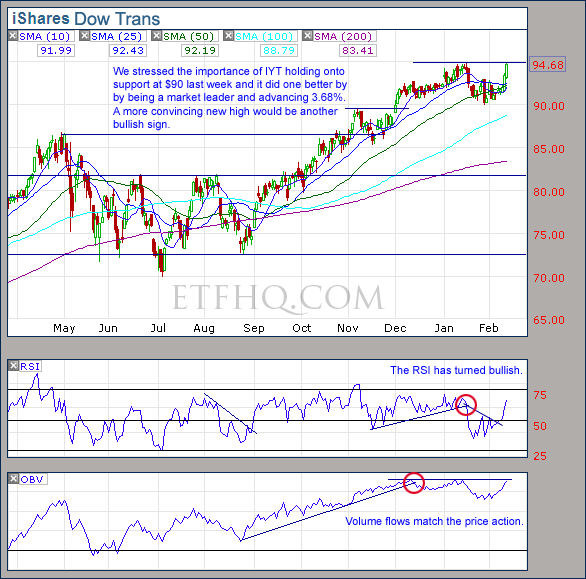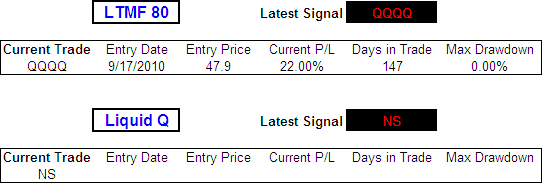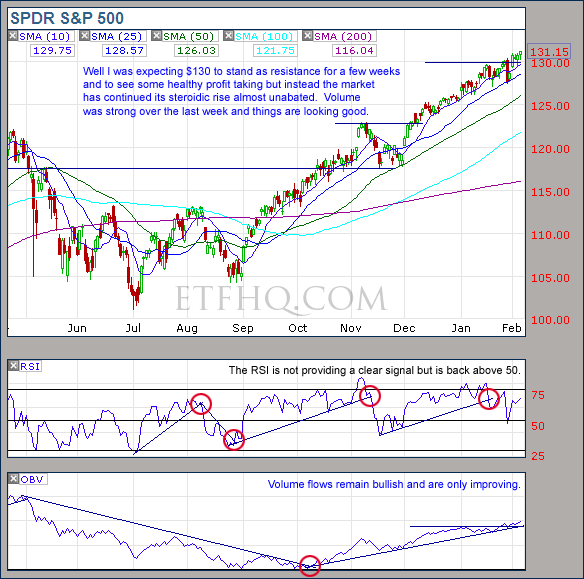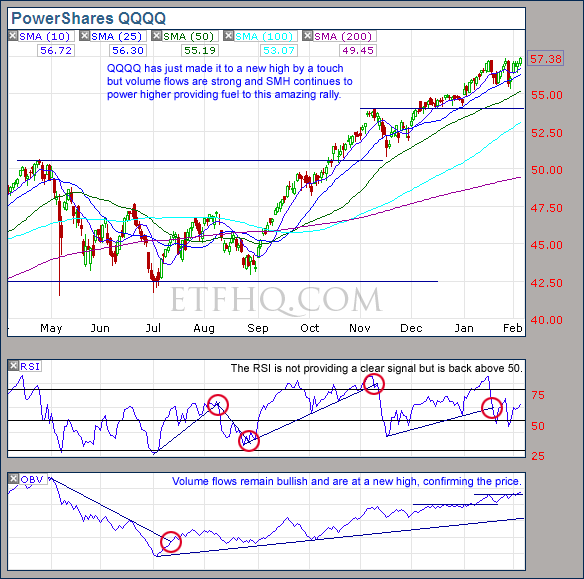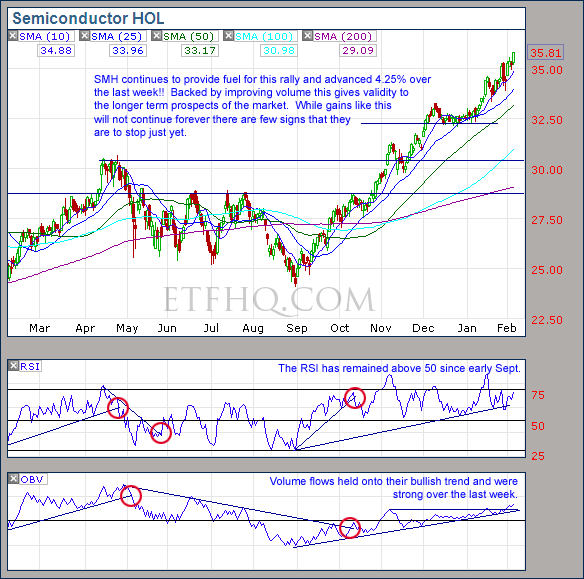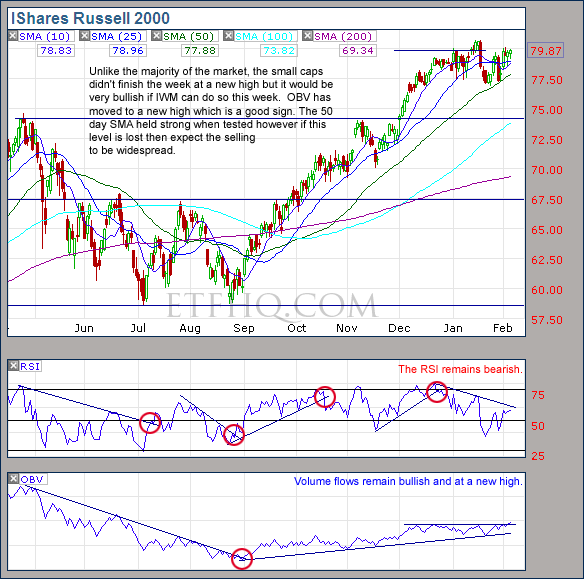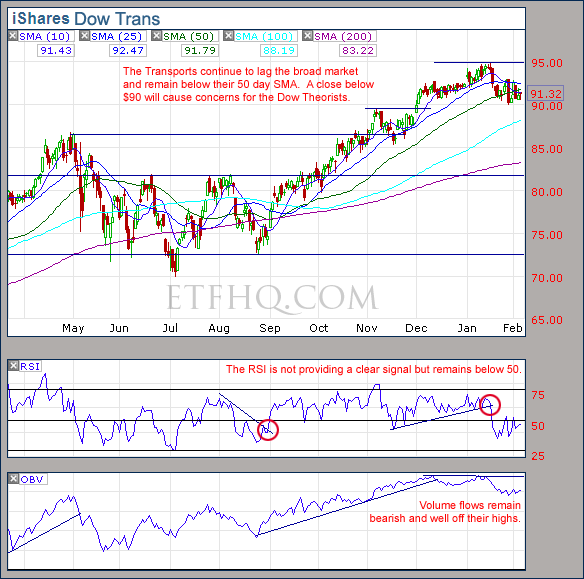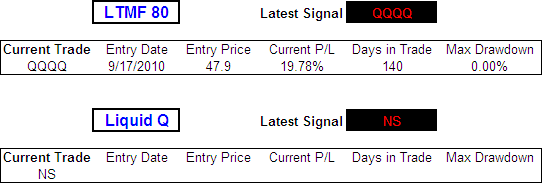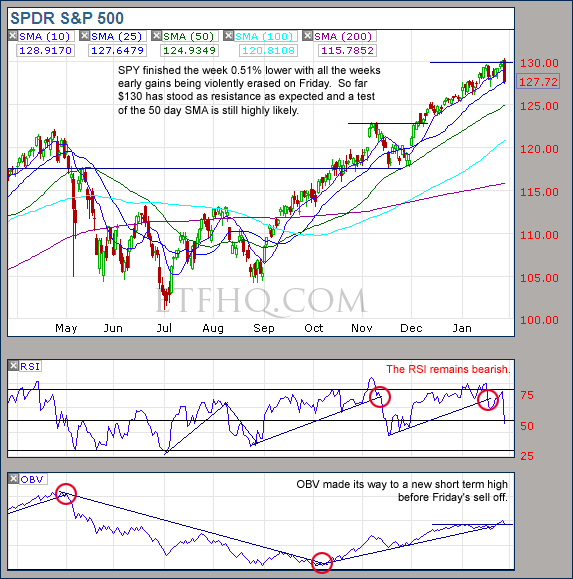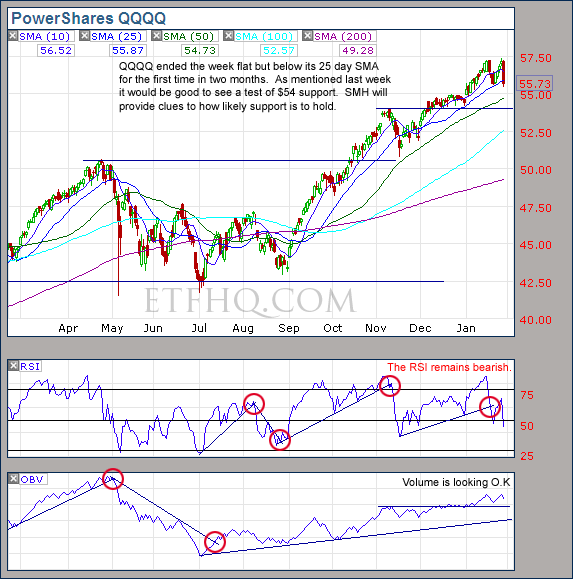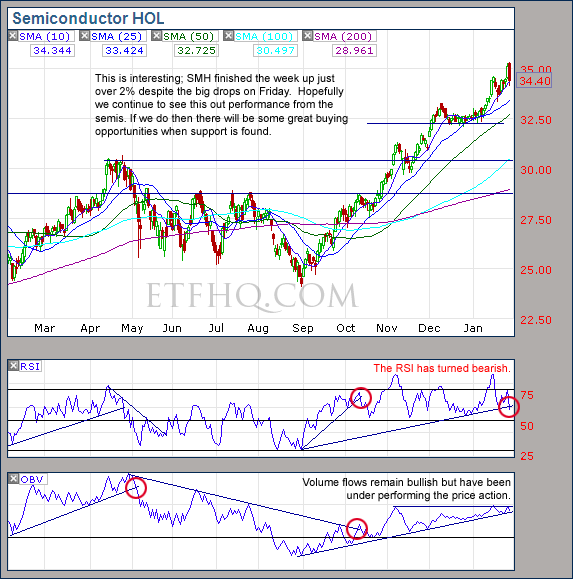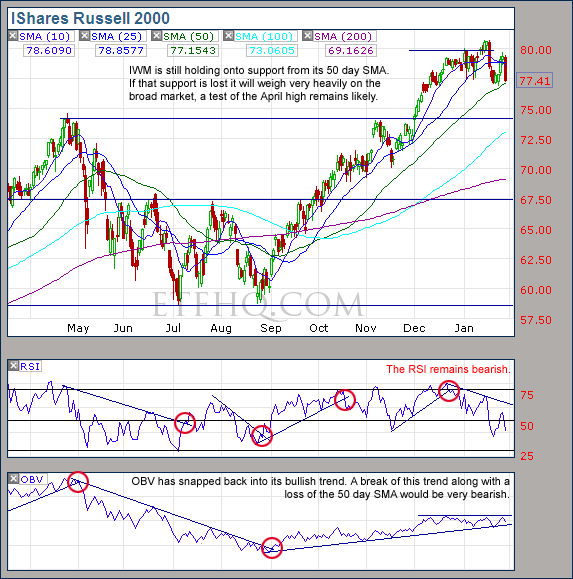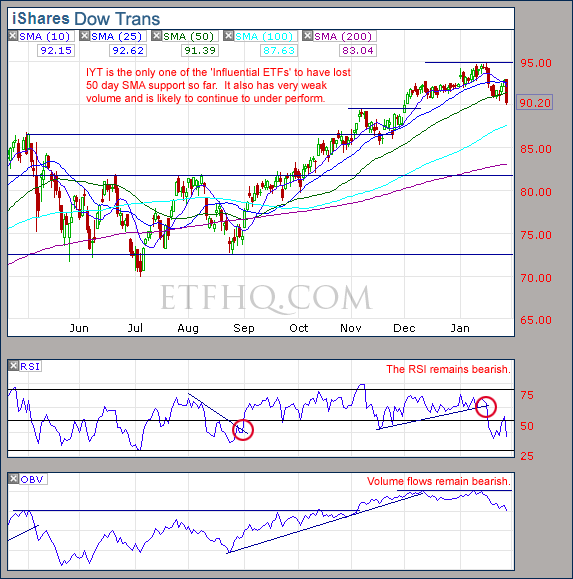April 04, 2011 – 08:10 am EDT
The broad market continued higher over the last week and into the 2nd quarter of 2011. But on a negative note SMH failed at resistance from its 50 Day SMA and fell back. Is this is sign of coming weakness or just a bump on the way to new highs? Lets take a closer look…
**** We grow by word of mouth, please continue to spread the word. Thanks!
.
ETF % Change Comparison
.

As you can see the Semis (SMH) gave back 1.42% over the last week which is never a positive sign because the semis tend to lead the broad market. What is good however is that the Transports (IYT) and the small caps (IWM) finished at new highs and both had a very strong week. Now, the broad market can’t make much ground without participation from the SMH but while IYT and IWM continue to show such strength there is no immediate cause for concern.
Learn more – ETF % Change Comparison
.
![]()
.
A Look at the Charts
.
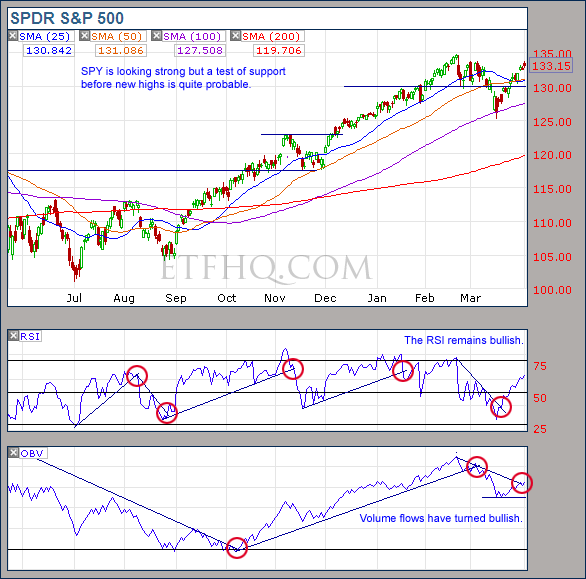
Volume is improving but a test of $130 would be healthy before further advances.
.

QQQ really needs the close above its 50 Day SMA to be confirmed by SMH doing the same before it can carry any weight.
.
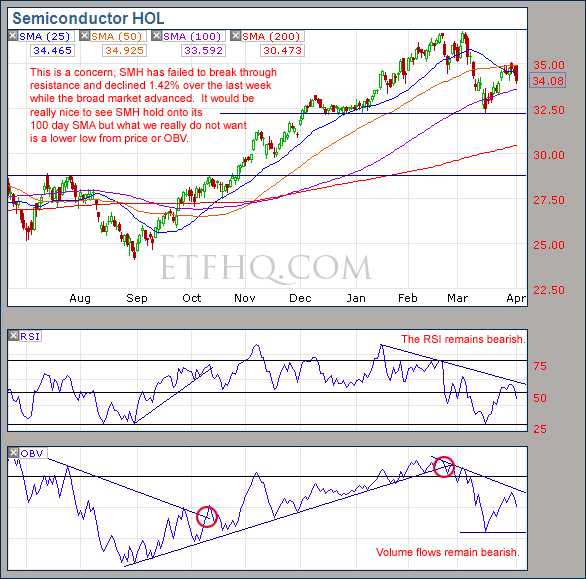
SMH is suddenly offering a bearish argument. Simply avoiding a close below its 100 Day SMA would be very encouraging.
.
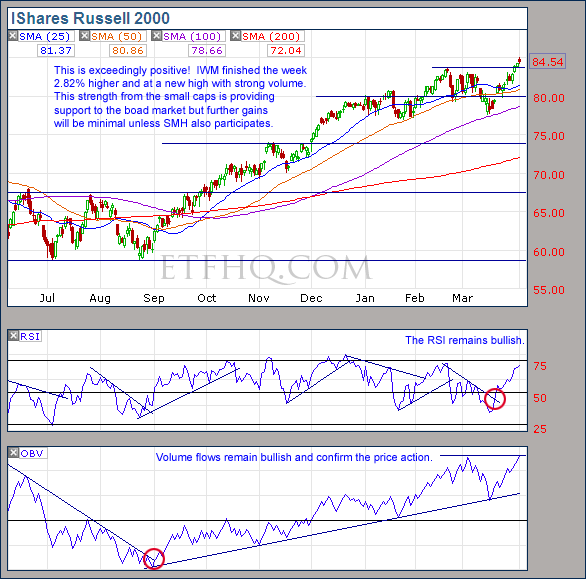
Very strong volume combined with new highs from the small caps (IWM) and we have reason for faith in the bulls.
.

When the Transports (IYT) are leading the market to new highs there is rarely reason for concern.
.
![]()
.
OM3 Weekly Indicator
.

Weak signals indicate indecisiveness and the lack of a strong trend.
Learn more – The OM3 Indicator
.
![]()
.
TransDow & NasDow
.

TransDow – After two weeks the Transports remain dominant over the Dow and the current trade is showing a profit of 6.22%.
NasDow – The Dow remains dominant of the the NASDAQ and the NasDow remains in cash.
.
What the TransDow Readings tell us:
The TransDow measures dominance between the DJ Transportation Index (DJTI) and the Dow Jones Industrial Average (DJIA). In a strong market the more economically sensitive Transportation Index should be dominant over the DJIA.
Historically the DJTI has been dominant over the Dow 45% of the time. The annualized rate of return from the DJTI during this period was 18.47% with the biggest loss for one trade sitting at -13.27%. The annualized return from the DJIA during the periods it was dominant over the DJTI was just 4.06% and the biggest loss for one trade was -16.13%. A 4% stop-loss is applied to all trades adjusting positions only at the end of the week.
What the NasDow Readings tell us:
The NasDow measures dominance between the NASDAQ and the DJIA. Using the same theory behind the Trans Dow; in a strong market the more economically sensitive NASDAQ should be dominant over the DJIA.
Historically the NASDAQ has been dominant over the DJIA 44% of the time. Taking only the trades when the NASDAQ is above its 40 week moving average the annualized rate of return was 25.47% with the biggest loss for one trade sitting at –8.59%. The annualized rate on the DJIA during the periods it was dominant over the NASDAQ is just 8.88% and the biggest loss for one trade was –12.28%. A 8% stop-loss is applied to all trades adjusting positions only at the end of the week.
.
![]()
.
LTMF 80 & Liquid Q
.
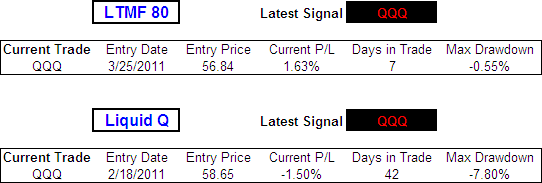
LTMF 80 is showing a profit of 1.63% on its open position in QQQ after one week. Liquid Q on the other hand continues to show a loss after 42 days although the loss has gotten much smaller.
.
Historical Stats:
.

.
How The LTMF 80 Works
LTMF stands for Long Term Market Forecaster. It reads volume flows relative to price action and looks for out performance of volume measured on a percentage basis over the prior 12 months. During a sustained rally the readings will reach high levels (near 100%) making it imposable for the volume reading to always outperform price so any reading above 80% will maintain the buy signal. This system has outperformed the market over the last 10 years but performance has been damaged by some nasty losses. It only produces buy signals and only for QQQQ.
How Liquid Q Works
Liquid Q completely ignores price action and instead measures the relative flow of money between a selection of economically sensitive and comparatively stable ares of the market. It looks for times when the smart money is confident and and can be seen by through volume investing heavily is more risky areas due to an expectation of expansion. This system has outperformed the market over the last 10 years and remained in cash through most of the major declines. It only produces buy signals and only for QQQQ. We will provide more performance details on the web site for these systems soon.
.
![]()
.
Summary
The sudden under performance of SMH raises warning bells that should not be ignored. However while SMH remains above its 100 Day SMA and IYT above $95 there is no immediate cause for concern.
Any disputes, questions, queries, comments or theories are most welcome in the comments section below.
.
Cheers
Derry
And the Team @ ETF HQ
“Equipping you to win on Wall St so that you can reach your financial goals.”
.
![]()
.
Quote Of The Week:
“Do not go where the path may lead, go instead where there is no path and leave a trail.” – Ralph Waldo Emerson


